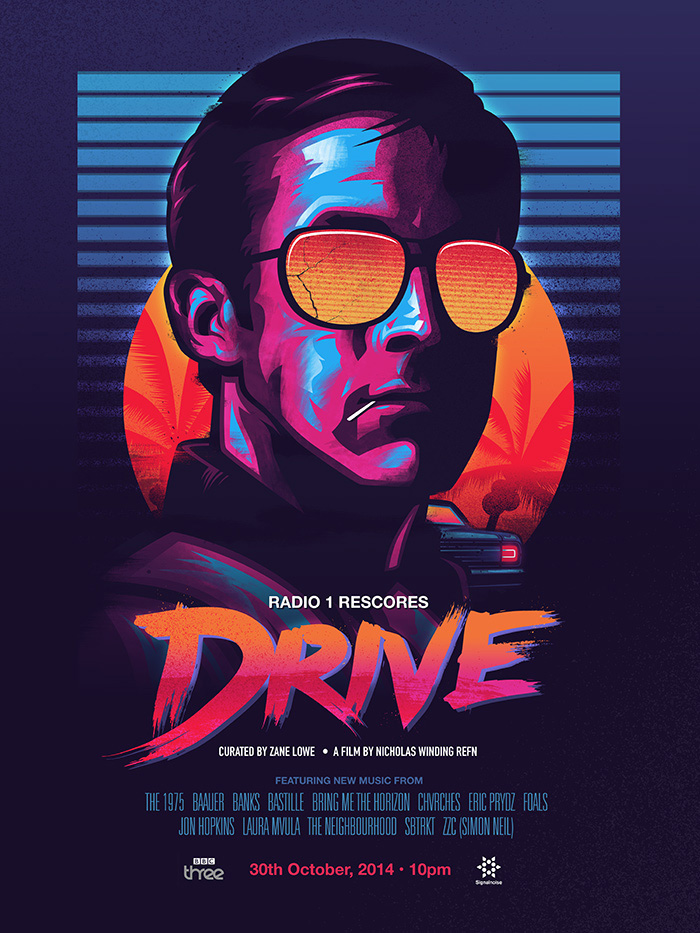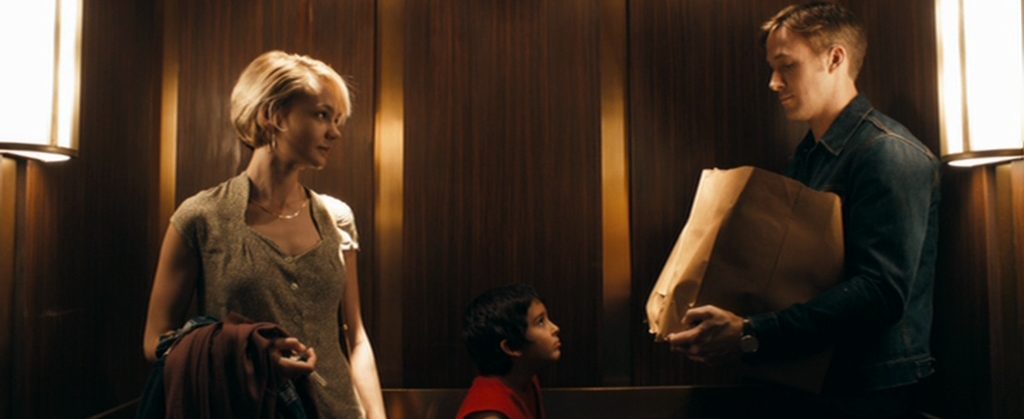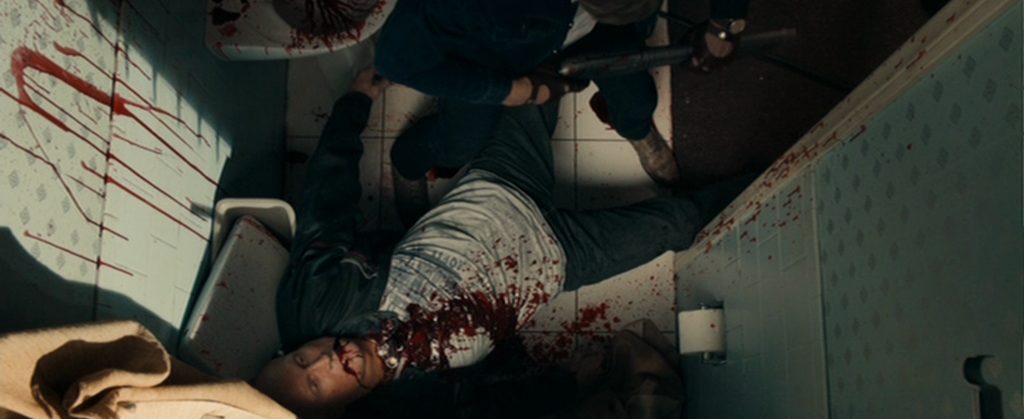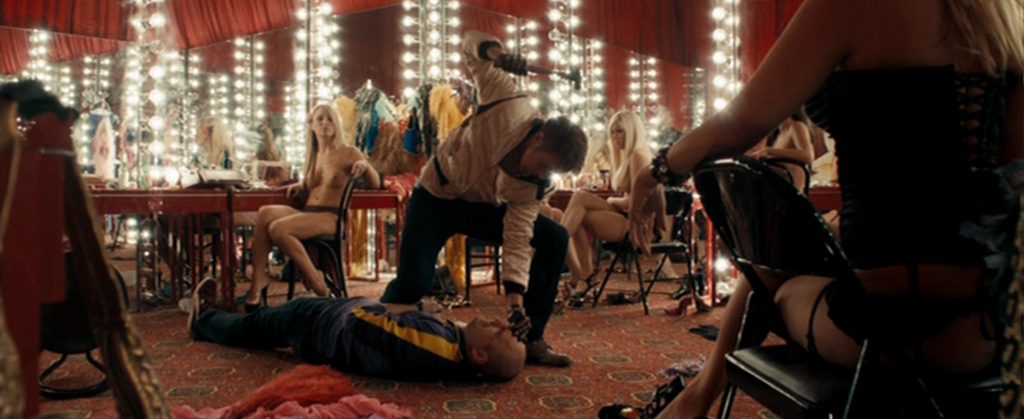![]()

“I don’t have wheels on my car. That’s one thing you should know about me.”
I’ve watched Drive three times now, with a number of years between each spin. It’s hit me differently each time I’ve seen it. The first time, I was an excitable teenager who thought the slow motion gore and visual aesthetic were sublime. The second time, I was showing it off to a friend whose cinematic diet wouldn’t have included such a relatively low profile film, and I began to pick up on how skillfully Nicolas Winding Refn breaks conventions without losing an ounce of entertainment value. I’ve probably seen a thousand movies since I last watched it, and I anticipated that its luster may have been dulled by the dilation of my tastes—maybe it wouldn’t have the off-kilter appeal it once did, or the action wouldn’t be as sensational as it was in my memory, or the perfectly captured neon-noir ‘80s revisionist vibe would feel stale. I breathed a sigh of relief when the pink cursive title card dropped as Ryan Gosling’s nameless protagonist drove the darkened streets with a toothpick dangling from his mouth and synthpop blaring from his speakers. It sucked me in just like it always has, and never gave me a sliver of opportunity to lose interest. By the time the driver cruised into the night to another round of synthpop at the end credits, I was once again convinced of the film’s greatness.
Refn critics have consistently taken aim at his weak stories. I won’t deny that the same critique applies to Drive, but it seems to me that the weak story here does not create a weakness in the film as a whole. It’s an assemblage of caricatures, clichés, and action sequences that are staged, shot, and edited with such creative precision that the shallow quality of the underlying story doesn’t really matter to me. (I’ve never read James Sallis’s source novel, which must have some more meat to it than Refn’s treatment.) The Driver (Gosling), a taciturn gentleman with no history, holds down three jobs—he’s a mechanic, a stunt driver, and a getaway driver for small-time criminals. His various duties are all managed by Shannon (Bryan Cranston), a talkative shop owner who deals with mob bosses and Hollywood studios. The film opens with one of the Driver’s illegal outings, as he tells his client over the phone, “There’s a hundred thousand streets in this city. You don’t need to know the route. You give me a time and a place, I give you a five minute window. Anything happens in that five minutes and I’m yours. No matter what. Anything happens a minute either side of that and you’re on your own. Do you understand?” Without a hint of panic, he delivers two criminals and their spoils out of the hands of a swarm of LA cops, even casually bumping into an officer as he strolls from the parking garage where he dropped his clients.

There’s a funny anonymous story floating around the internet that I recall seeing several times. The poster suggests that he was stuck in a rut in life when he first saw Drive and it had a powerful impact on him. He modeled his looks and behavior after the Driver. Now, it’s not uncommon for someone to adopt a mannerism, hairstyle, or catchphrase from a movie, but to have an emulation phase is usually a thing for eight year olds. This dude drives the same car as Gosling’s character, speaks seldomly, and becomes a regular at a local diner. Eventually his cool demeanor attracts a waitress at the diner. They begin dating, he meets her friends, and their boyfriends start acting like him. But he’s just putting on this Driver act! The story ends with a bit of a joke as the couple sit down to watch a movie together and he has to pretend like he’s not interested in Drive so that his girlfriend picks something else and doesn’t blow his cover. I couldn’t find the story online (not sure what search terms would bring it up), but I first saw it because a semi-famous person posted on Twitter that they had seen Drive and realized that their college boyfriend had based his entire personality on the character. Someone made the connection between the stories and it blew up. This story is amusing because the Driver is barely a character at all—aside from his driving skill and his protective instincts, his personality is largely undefined. He moves through his life with an austere demeanor, rarely speaking more than a few words, and only smiling around his neighbor, Irene (Carrie Mulligan) and her son Benicio (Kaden Leos) who seems to stir something within the existential man. We can guess at his past and his thoughts based on his actions, but we never get a real glimpse into his mind. He’s stoic, but also an adrenaline junkie, becoming animated when he’s in a car chase or enacting brutal revenge, but still doing those things with an impossibly even-keeled approach. Gosling’s character and performance are not unlike Alain Delon’s Le Samouraï, a confounding mixture of tough and tender. Many action heroes are forgettable because of a similar lack of distinction, but the reserved quality of the Driver is intentional here rather than a result of bad writing, and Gosling’s magnetism is substantial enough to jibe with the Refn’s style.

Anyway, the thin story involves the Driver befriending the neighbor and son I mentioned. After a few blissful days of platonically getting to know one another, the neighbor’s husband, Standard (Oscar Isaac), returns home after his release from prison. At a homecoming party, he stares down the Driver, feels him out, and realizes he’s a professional. He confides in him that his criminal creditors have demanded he pay up, and that he will do so by robbing a pawn shop. The Driver offers his services, but things go poorly, Standard is killed, and the Driver finds himself sequestered in a seedy motel room with a lowlife traitor named Blanche (Christina Hendricks). We are subsequently treated to several sequences of bloody, slow motion carnage as the Driver takes this job more personally than usual.
It’s undeniable that Refn prefers imagery and set pieces to intricate storytelling, but Drive is his work that most consistently uses familiar cinematic elements to fool the viewer into thinking they’re watching something other than ultraviolent arthouse. He puts together a collection of mobsters, car chases, stolen money, armed robbery, shady go-betweens, bloody shootouts—elements that can make a first pass at Drive seem like a run-of-the-mill action flick. But Refn is a director who thrives on the bells and whistles, and accordingly puts the bulk of his efforts into toying with camera angles, shutter speed, staging, lighting, wardrobe, iconography, soundtrack, and practical effects. Large swaths of the film are meditative and brooding, more concerned with atmosphere than mindless action. But when it does delve into action, it does so with aplomb.

To watch Drive is to witness an apparent paradox. It looks better than basically every single blockbuster film that features ridiculous CGI car chases and choreographed fight scenes and yet is devoid of any off putting technical intrusion. It’s literally real in the sense that there is minimal manipulation of physical motion, but decidedly unreal because Refn favors stylish elan over realism 100% of the time. And that’s awesome because it leads to moments of pure cinematic vibe. The neon drench, the slow motion, Gosling’s rugged charisma. Just great stuff when it all comes together. For me, the film’s high point occurs late, when the Driver confesses to Irene that Standard was in over his head and that their plan went awry. As they step into the elevator, and he realizes that the man descending with them has been sent to kill them, the film goes quiet. Over the course of a slow motion minute and a half, the Driver pushes Irene into the corner of the elevator and kisses her while soft ambient music plays. Then the slow motion and the music end, the Driver turns rapidly on the hitman, and beats him to death. From abstract creativity to bloody pulp on a dime.
Drive has all the stuff that you’d expect from a high octane Hollywood crime film, but rather than utterly sucking like most of them, Refn’s creative hand elevates the proceedings and we’re blessed with a modern arthouse masterpiece.